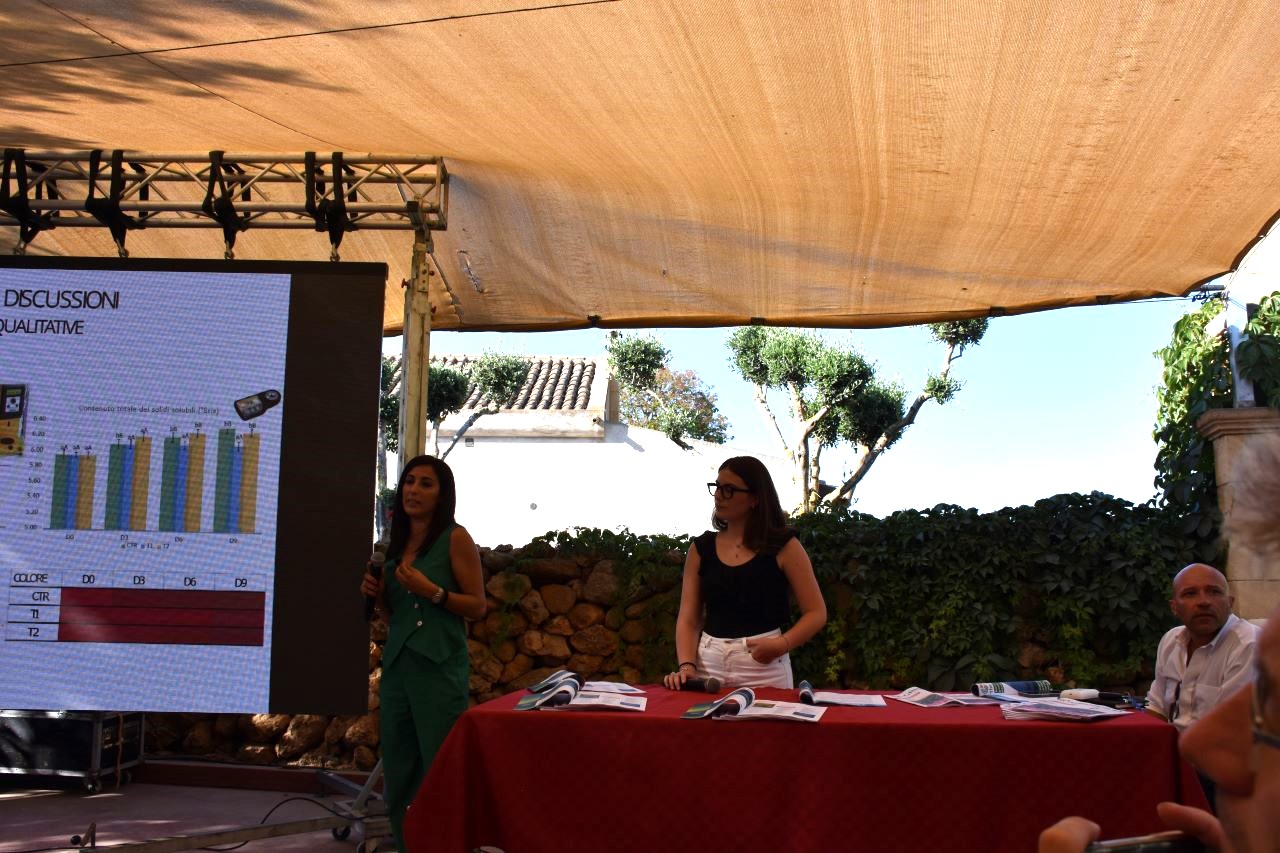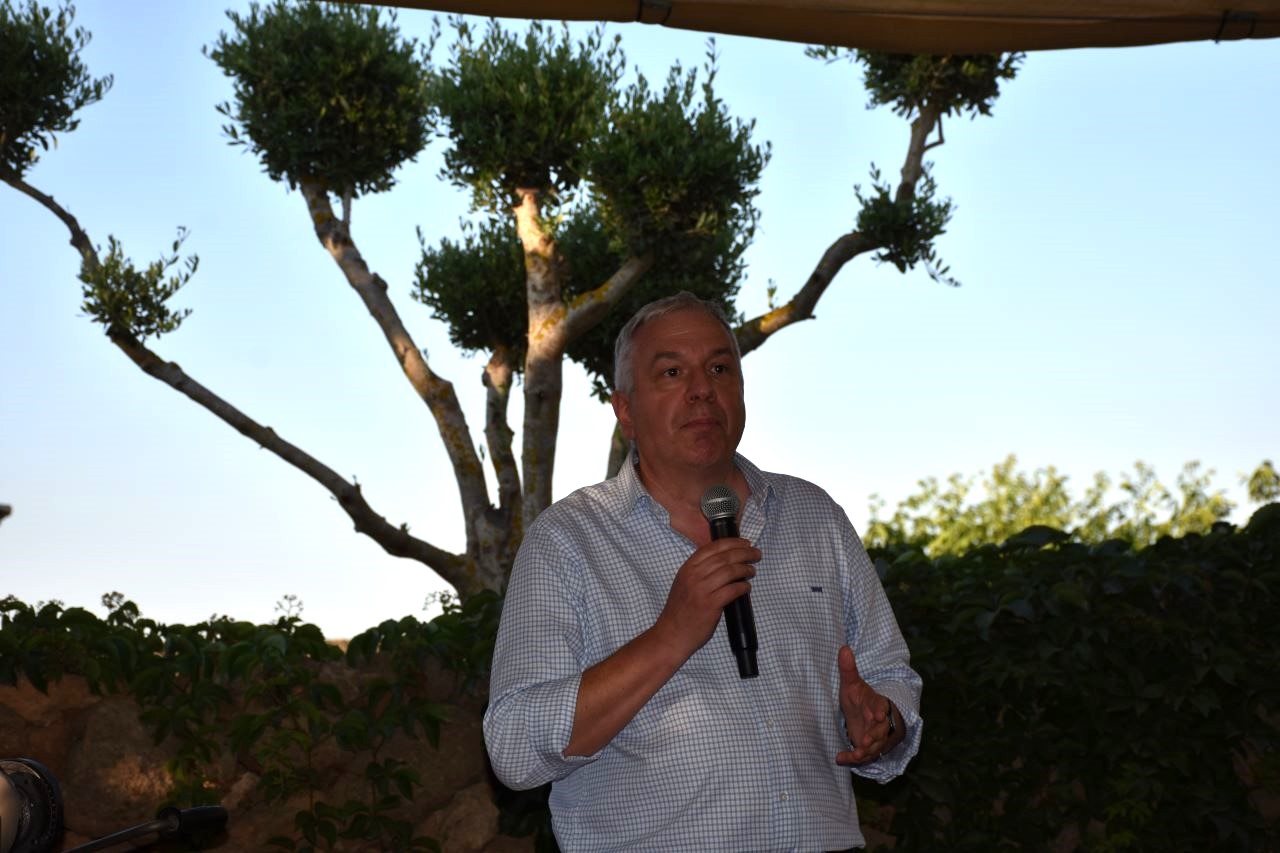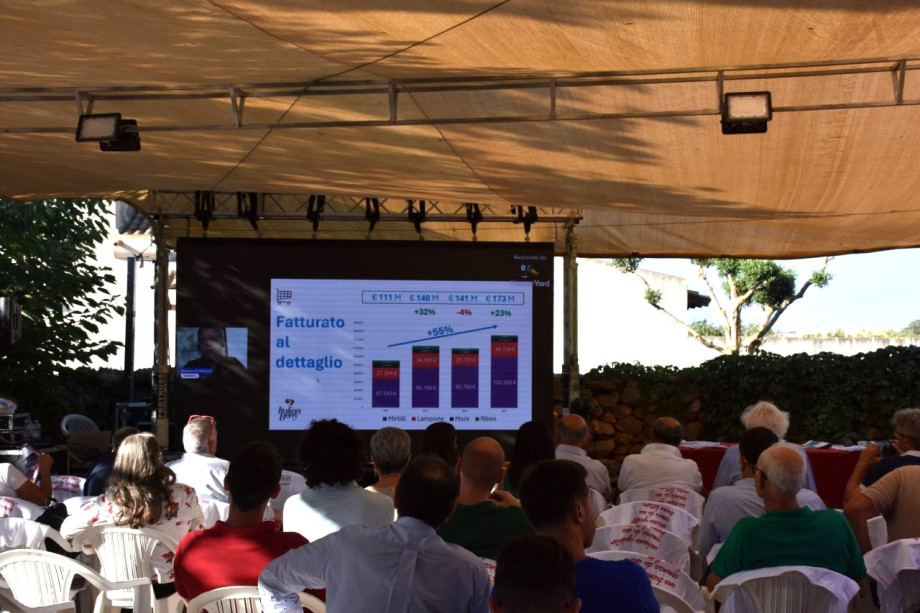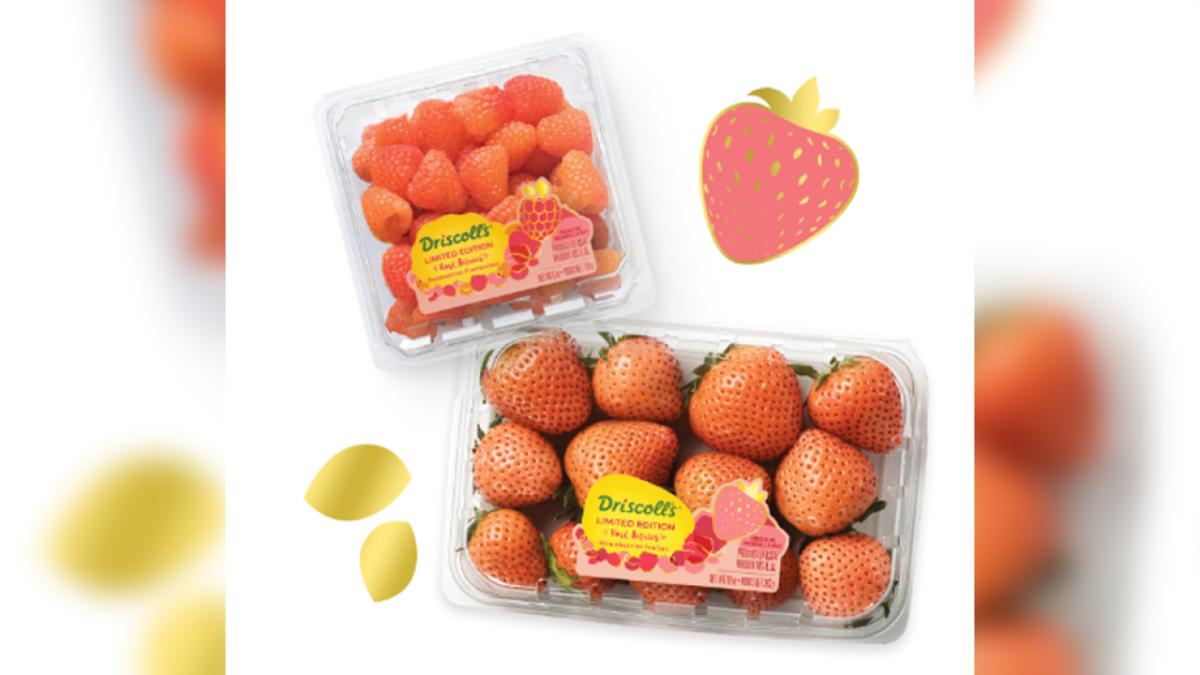Producers of strawberries and berries, companies, researchers, and educators gathered in Marsala, in the province of Trapani, for the third Strawberry and Berry Symposium held yesterday, July 11, at the A piccoli di Frutti farm of Vito Gambina.
The event was organized by the monthly magazine Agrisicilia, which aimed to highlight all the latest developments in the sector, from experimentation to technological applications, with ample space given to the results of studies born from the collaboration between entrepreneurs and the academic world, as well as the most innovative proposals from industry companies.
From varieties to packaging, the event demonstrated the great attention around berries, whose market is growing in a general context of declining fruit consumption.
Blueberry cultivation, with its challenges and innovations, was the focus of Cristiano Carli from Agrion, while Francesca Cerami from Idimed illustrated the Tinfrut project.
Market Trends
Thomas Drahorad, from Italian Berry, provided an overview of the Italian berry market trends via video link.
In terms of production, strawberries dominate with 4,070 hectares cultivated, followed by blueberries with 1,600 hectares. While strawberry consumption remains stable, the value increased by +7.2% in 2023 compared to the previous year.
Blueberries, on the other hand, have increased both in quantity (+4.4% compared to 2022) and in value (+22.9% compared to 2022). The same applies to raspberries, with a quantity increase of +3.4% and a value growth of +21.0%.
Blackberries also performed well, with a significant +16.3% in quantity and a value increase of +46.2%.
The penetration in Italian households has increased: “This is a sign of great potential. In more advanced markets, where there has been strong promotion of consumption, penetration is over 50%. There is thus the possibility of interesting more families in consuming berries in Italy as well,” noted Drahorad. All the data presented are available to Italian Berry readers for download.
Download the Presentation
Click here to download Thomas Drahorad's presentation.
Post-Harvest, Shelf Life, and Second Life of Waste
Among the ongoing studies is the post-harvest management research reported by Ilenia Tinebra and Graziana Errera from the Saaf Department of the University of Palermo.
Three years of work, in collaboration with Vito Gambina, to explore the possibility of increasing the shelf life of berries. Over time, various solutions have been applied, including modified atmosphere technologies and edible coatings to preserve their characteristics.
The study also allowed work on a second life for waste by identifying post-harvest techniques that maximize the use of raw materials. Through a drying process associated with the use of ultrasound, a berry powder was obtained, which subsequent analyses showed maintained high antioxidant power and a strong antimicrobial effect.
The powder also had a pleasant taste, which led to the preparation of cookies that, when tested by a group, were found to be pleasant in taste, leading to further studies on potential commercialization opportunities.

However, the main issue concerns the heat that berries absorb in the field, which can cause a loss of texture, and therefore quality, and increased sensitivity to pathogens.
The study also assessed the effects of temperature during harvest using sensors, recording a temperature of 39.4 degrees Celsius.
A correlation between high fruit temperatures and shelf life was also highlighted. Based on this, strategies are now being implemented to reduce heat already in the field, particularly using CO2.
Innovations by Mugavero
Another research presented was conducted by the Sicilian company Mugavero in collaboration with the University of Palermo to evaluate innovative formulations on strawberries and blueberries.
One line of research focused on the plant's tolerance to thermal fluctuations, improving coloration and shelf life, while another aimed at obtaining a nutraceutical fruit. The goal of increasing iodine levels, with all the benefits this entails for human health, was achieved.
The research also focused on the increase in flower differentiation, starting from the evidence that in Mediterranean environments, the underlying buds often do not flower. The study, however, led to the long-awaited synchronization.
Del Monte in Sicily
One of the most anticipated moments of the day was the speech by Gianluigi Bertelli, senior sales manager at Del Monte, who presented the new industrial development project of the well-known multinational dedicated to soft fruits. “We want to focus on local production with products that will be distributed in Sicily and southern Italy,” explained Bertelli.

As part of a broader diversification operation, Del Monte is looking at the island because it can offer a longer berry season and because consumption on the island is also growing.
The project should start as early as next September and is open to collaboration with local producers, provided they have all the necessary certifications to ensure a high-quality standard.
The warehouse of Vito Gambina, which is already certified in option A, will be the point where all the products, predominantly Sicilian but also imported if necessary, will be converged, controlled, and distributed.
“For me, it represents a great honor, but for all of us producers in the Trapani area, it is an opportunity for commercial growth,” observed Vito Gambina.
Antonella Genna for Italian Berry
Italian Berry - All rights reserved
```










